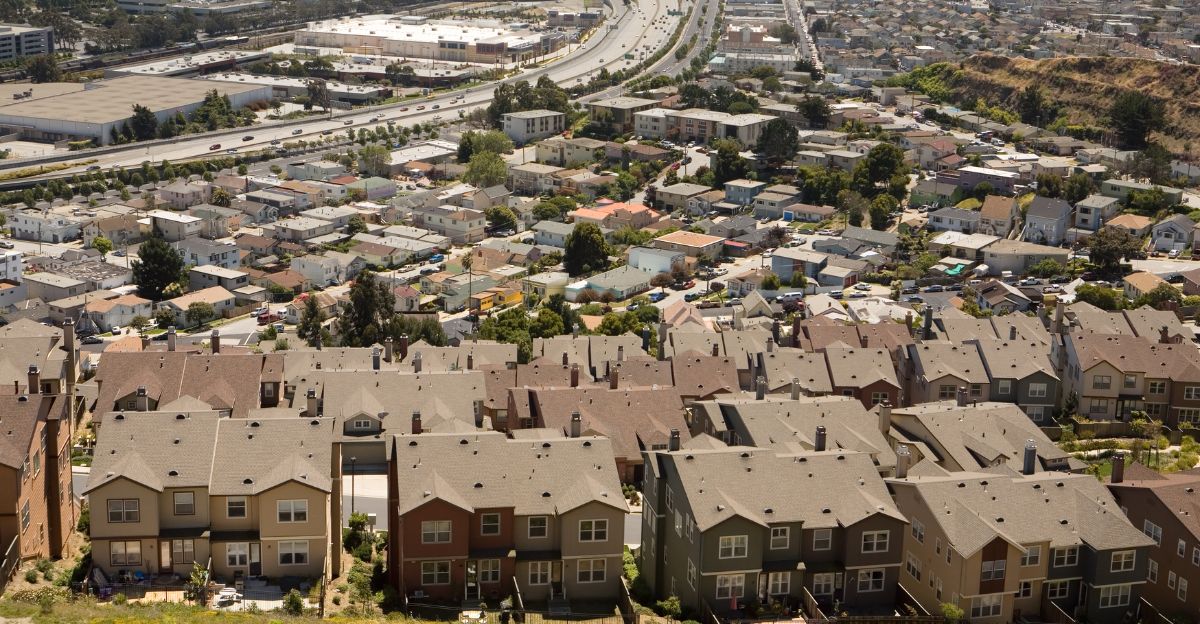
Once known for its promise, inventiveness, and sunshine, California is now confronted with a sobering reality: a steady, measurable population decline. The data is indisputable: hundreds of thousands of people depart each year, citing exorbitant expenses, oppressive regulations, and a declining standard of living, despite state boosters’ denials.
Uncomfortable facts about the state’s cultural myths, unsustainable course, and the actual future its citizens are choosing become apparent when one understands why people are leaving and where they are going. Changes in migration patterns and aspirations, which once drew millions, now clearly turn them off, further complicating the story.
From Magnet to Repeller: A Historical View Following

During World War II, California was a unique combination of opportunity, innovation, and scenic beauty that drew millions of people and increased its population by 137% between 1960 and 2010. The state’s promise was alluring back then, but it has since lost its shine. Nearly 3.4 million more Americans have departed than arrived since 1990.
The idealistic portrayal of California as a land of limitless possibilities is called into question by this reversal in migration dynamics. Stories of homelessness, exorbitant taxes, and acrimonious political arguments have now damaged the state’s reputation. The transition from the epicenter of the American Dream to a warning story demonstrates how quickly public opinion can change when external forces and internal policy decisions are combined.
Cruel Economics: The Price of Remaining

This migration is being driven by the cost of just living in California. With median home prices in many cities reaching over $850,000 by 2025, housing costs are out of reach for entire resident classes. Renters barely fare any better: monthly rent for a one-bedroom apartment is often over $2,800.
The luxury of living in the Golden State comes at the expense of long-term financial security and savings, even for those with comparatively high incomes. Employees in the public sector and service industries in particular face growing difficulties, such as stagnant pay and diminishing benefits. In the meantime, the economic strain drives people to seek out more affordable, higher-quality options elsewhere in the US, fracturing communities and escalating general annoyance.
Who’s Gaining from California’s Outflow with Leapfrog Destinations?

There’s a good reason why Texans make fun of “Californiacation.” Between 2022 and 2023 alone, nearly 94,000 Californians moved to Texas, far outpacing flows to any other state. Because of their reduced taxes, more affordable housing, and increased employment prospects, Arizona, Nevada, and Washington are popular destinations. Urban areas with “California-adjacent” amenities, such as Austin, Phoenix, or Seattle, are frequently the new migration hubs.
This wave of internal migration raises concerns about integration and sustainable growth in destination cities, which may cause conflict with long-term residents while also igniting economic booms. Particularly, the tech and creative sectors gain, but affordable housing and public infrastructure are strained, putting the very issues Californians were trying to avoid back on the map.
The Accelerator for Remote Work

The exodus wasn’t started by the COVID-19 pandemic, but it was accelerated by it. Calculus was changed by remote work: if the office is gone, what’s the point of paying for a loft in the Bay Area? Flexibility meant freedom to knowledge workers and tech workers. As a direct result, a record number of Californians who would not have otherwise left, including highly educated residents, joined the exodus.
Whole industries have reassessed physical location as a liability rather than an asset as remote work has become more commonplace. In addition to the tech industry, remote work has liberating effects in the creative, financial, and administrative domains, decentralizing talent pools across the country.
The Issue of Hollowing Out

A hollowing effect is evident as California’s exodus continues: the state loses not only middle-class and working-class families, but also a growing number of its skilled workers and budding business owners. The state has lost college graduates since the pandemic, but less educated groups continue to depart at higher rates. A smaller tax base, fewer new businesses, and a reduced capacity to pay for social services are all consequences of this “brain drain.”
California’s universities, hospitals, and technology sectors face shortages as qualified workers leave, which has an impact on public health and economic stagnation. Additionally, the state’s costly but generous social safety net is threatened by a declining pool of high-earning taxpayers, which forces policymakers to make tough decisions.
Is There Too Much Panic?

By pointing out that population outflows are slowing down and that California’s population has recently returned to pre-pandemic levels, some scholars contest the idea of a “mass exodus.” According to their research, the dream endures, particularly among immigrants, minorities, and younger populations.
Critics point to ongoing unaffordability, homelessness, and company closures, while hopeful reports point to increases in foreign migration and birth rates. While political debate is fueled by this division between data sets (one centered on gross population, the other on net domestic migration), the real question is sustainability: can California retain and attract enough tax-paying workers to make up for those it loses?
The Curse of the Winner for Receiving States

States that accept California’s out-migration may be subject to the “winner’s curse.” High-earner and entrepreneur inflows have the potential to change local politics, strain infrastructure, and raise housing costs, sometimes in ways that go against the state’s long-standing tax laws or values. The housing inflation and cultural conflict that afflicted Los Angeles and San Francisco are already evident in Austin and Boise.
California’s legacy could spread to other places. Longtime residents face new affordability challenges as housing markets heat up, and zoning, education, and civic engagement discussions get more heated. New ideas can boost local economies, but they can also make small cities and the suburbs into battlegrounds for equity, growth, and identity.
What Happens If the Trend Quickens?

Let’s say that California’s net outbound migration continues or increases, surpassing the levels seen during the pandemic. The state might be in a fiscal death spiral, with funding for social programs, transportation, and schools collapsing as tax revenues decline and high-cost obligations continue. Infrastructure constructed to accommodate an expanding population may become unmaintainable. On the other hand, if policymakers can adjust, communities that have been eroded by out-migration might have new chances for revitalization.
California might serve as a warning to other states that are on the verge of unsustainable growth or unachievable prosperity if trends continue to worsen. According to economic models, the multiplier effects may affect everything from national politics to the housing market.
Evolution or Exodus?

The exodus from California is not a singular incident; rather, it is a significant turning point that indicates a radical rethinking of the cost-benefit analysis of living in the largest state in the union. It is dangerous for policymakers to ignore. Asking why people are voting with their feet and whether the dream can be recreated are more essential challenges than simply stopping the trend.
The Golden State must decide whether to keep its past commitments or forge new paths in governance, cost containment, and quality of life as demographic and technological change collide. The experiment that is developing provides other states with both inspiration and caution—a live window into the challenging but essential process of adaptation when ideals and reality clash.
